Panama’s national police left approximately 20 indigenous Ngäbe protesters injured last week in what one medic described as an “absurd and irresponsible act”.
The protesters, all residents of Gualaquita, mobilized against the Barro Blanco hydro dam after the project’s owner and operator, Honduran-based Generadora del Istmo (GENISA) began flooding the Tabasará River basin with blessings from the government.
It didn’t take long for Ngäbe communities within the basin to suffer the consequences. In the community of Kiad, local road connections were washed away by the flood waters leaving entire families geographically isolated. Houses were also submerged by the rising waters, along with significant archaeological sites in the region.

Submerged houses. Photo: Ricardo Miranda
As the waters began to rise, Panama President Juan Carlos Varela was busy celebrating the signing of a formal “peace agreement” between his government and Silvia Carrera, the elected chief of the semi-autonomous Comarca Ngäbe-Buglé. President Verala claimed on facebook that “the success (of the agreement) was achieved on the basis of respect, tolerance and a thorough examination of the key aspects of the project.”
All of the Tabasará communities affected by the flood waters were excluded from the talks that led to the agreement. They also didn’t endorse the new agreement in any way, shape, or form.
The Ngäbe community of Gualaquita is located outside of the affected area, but they too declined to endorse the agreement.
For the protesters, who are members of the Mama Tatda religion, the Tabasará River is a holy site that needs to be protected. The river is also home to ancient petroglyphs and unique Ngäbe cultural centers. To the protesters, their loss or destruction represents a violation of religious freedom.
The government wasted little time responding to the protesters.
According to a preliminary report by one of the country’s largest trade unions – the National Front for the Defense of Economic and Social Rights (Frenadeso) – around 2pm on Aug 24, 2016, some 500 police officers arrived to crush the opposition.

Police in Gualaquita. Credit: Frenadeso
Speaking to Frenadeso, Dr. Manuel Pardo, who attended to the injured in the aftermath of the assault, called the protesters “victims of police aggression,” stating, “There was a clear and flagrant violation of the fundamental human rights of the community of Gualaquita.”
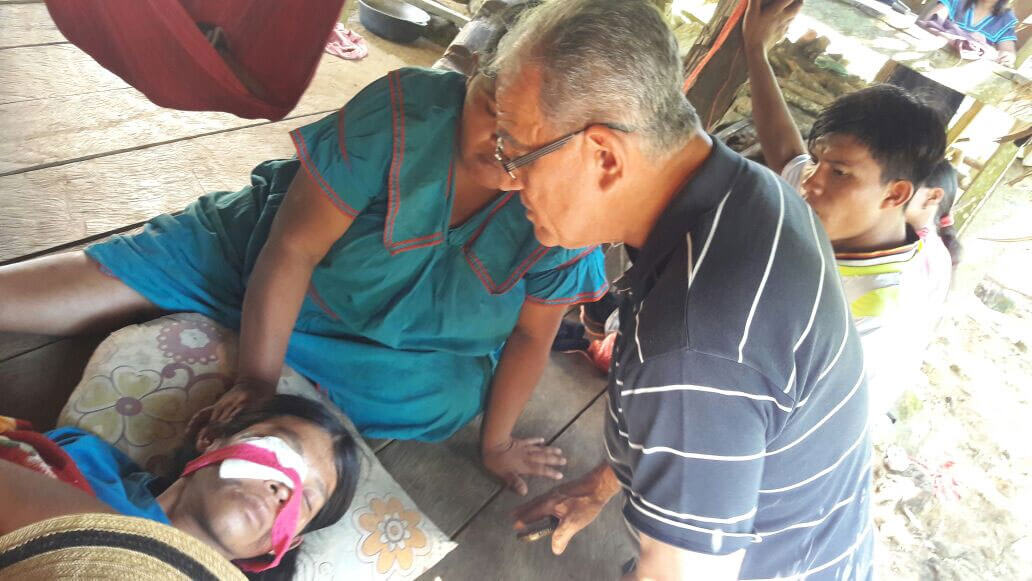
Dr. Manuel Pardo assesses the injured. Credit: Frenadeso
Osvaldo Jordan, director of the Alliance for Conservation and Development (ACD), told IC that the police didn’t just target the protesters. “[They] stormed into the whole community, detaining people who were not even in the protest… It was an outright occupation of the community, war style.”
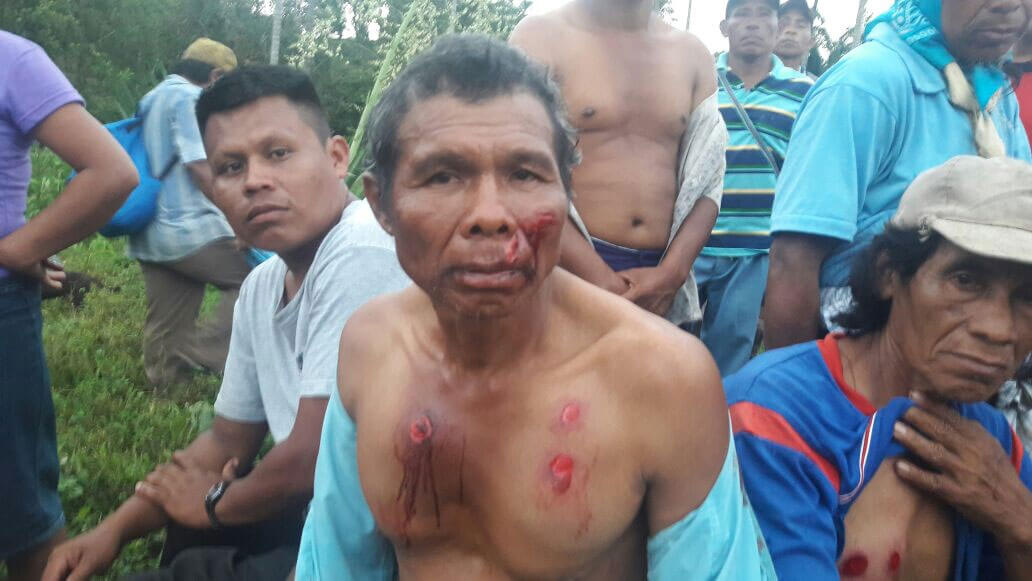
Injuries that appear to have been inflicted by rubber bullets. Credit: Frenadeso
“The weapons that were used for the confrontation were rubber bullets, birdshot and pepper gas,” said Dr. Pardo during his visit to the community on Aug 28, 2016.
“The police entered the community and practically every house was ‘fumigated’ with pepper gas… we are still coughing and itchy… In addition to rubber bullets, birdshot and pepper gas, the attacks involved physical blows and kicking… The result was 20 people injured…”
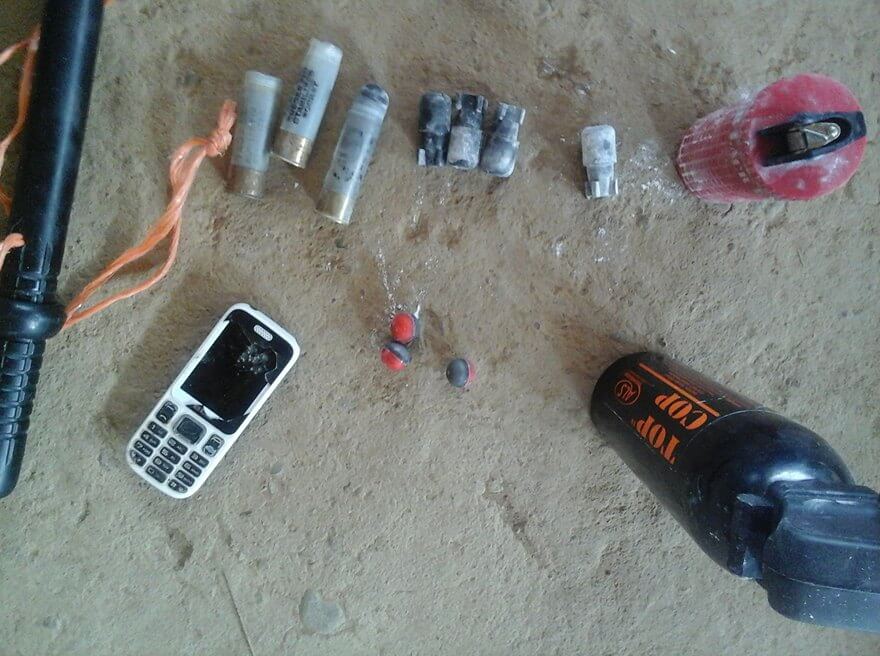
Police ammunition and equipment collected in Gualaquita. Credit: unknown
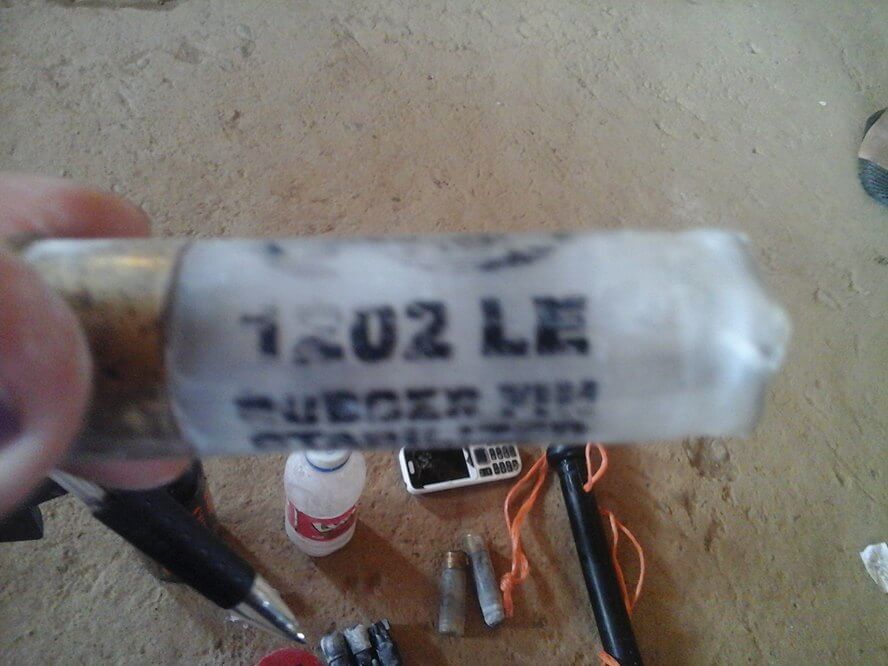
Police ammunition and equipment collected in Gualaquita. Credit: unknown
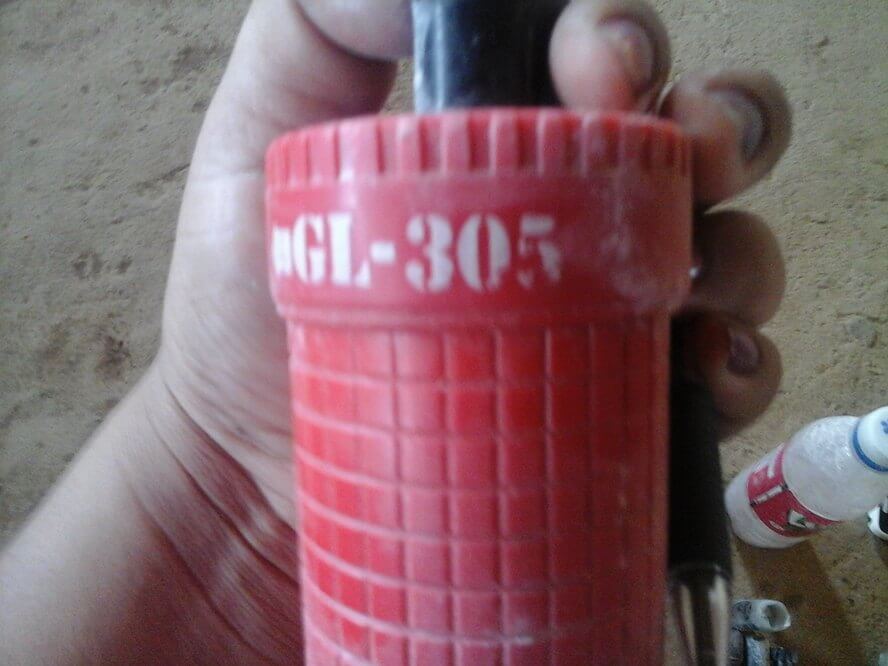
Police ammunition and equipment collected in Gualaquita. Credit: unknown
Dr. Pardo went on to explain that, three of the protesters were severely wounded during the crackdown. One person may have suffered a life-changing injury to his right eye. Another, who sustained serious head trauma, was detained by police for 48 hours before receiving medical treatment in a hospital.
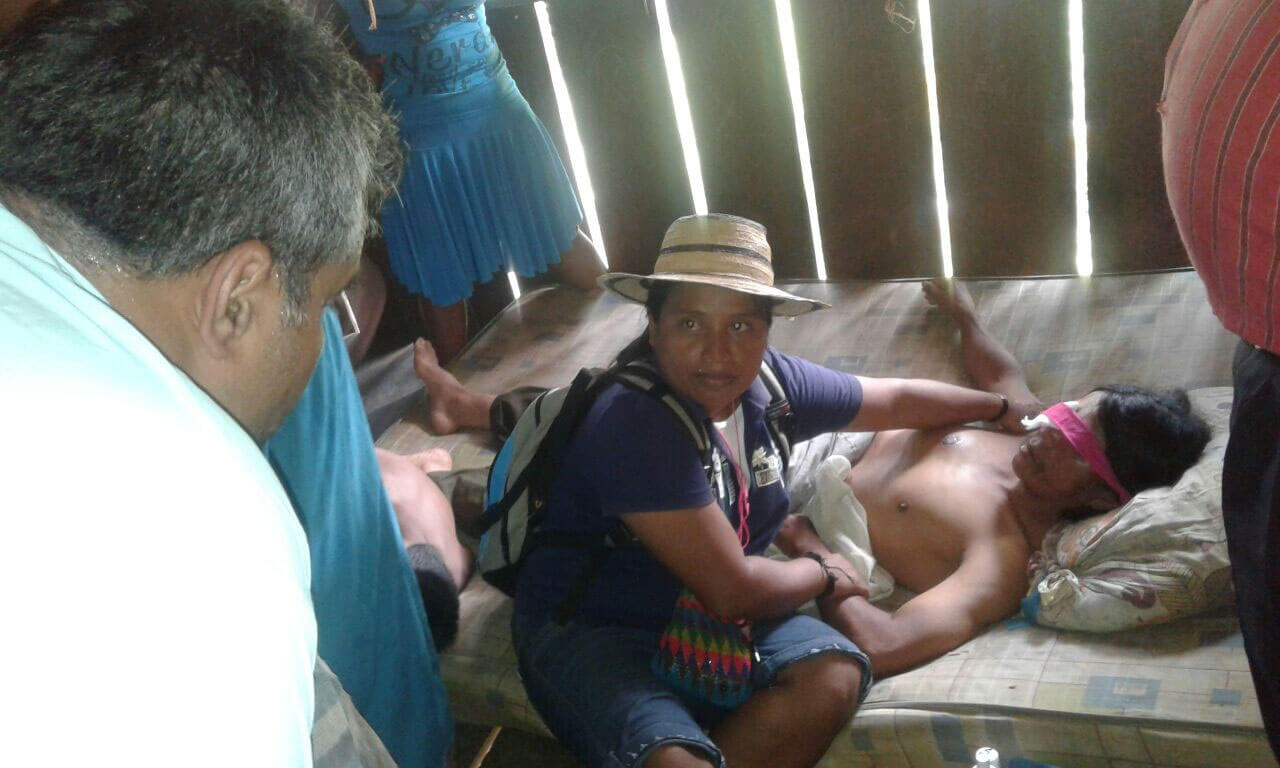
Adolfo Miranda was allegedly shot in his right eye by a rubber bullet. Credit: Frenadeso
Some of the injured community members reportedly refused to seek help from official institutions for fear of being arrested. Dr. Pardo described this as a ‘lamentable’ violation of their basic human right to health care.
The Frenadeso report also alleges that the police burned a Mama Tatda flag and broke into several community stores. They apparently stole food, cell phones, chargers and hundreds of dollars in cash. They are also alleged to have threatened a storekeeper with firearms and made various death threats to different people.
Some of the protesters hit back at the police with rocks and slingshots. Several officers were injured and subsequently transported by plane for treatment in private hospitals.
In the aftermath of the clash, images of the injured protesters were circulated on social media, but government ministers initially denied their veracity.
“They are using old photos of other incidents,” Alexis Bethancourt, Minister of Security, told La Estrella newspaper. “This police force guarantees human rights.”
Subsequent on-the-scene reporting from national journalists such as Lissette Centen helped to confirm that the images were in fact real.
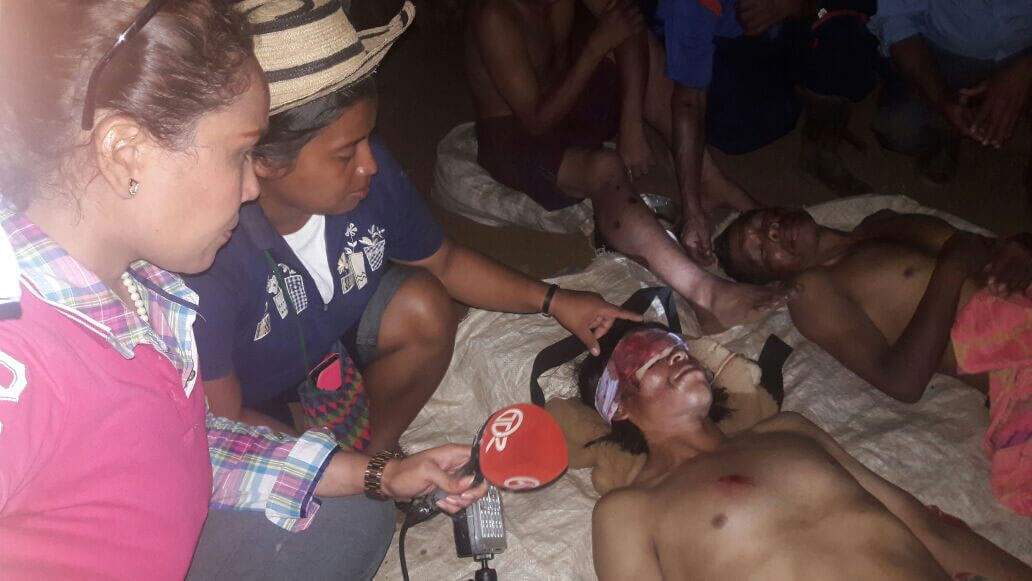
This photograph of journalist Lissette Centen at the scene verifies that the images were real. Credit: Frenadeso
Throughout the on-going conflict over Barro Blanco, President Juan Carlos Varela has run a cynical public relations campaign to give the impression that his government is committed to peace and dialogue with the Ngäbe.
Reality, however, says otherwise. According to a BARRO BLANCO. INFORME DDHH 22-6-16 (HRNP), the repression in Gualaquita is only the latest act of violence the Varela government has committed against Panama’s Indigenous Peoples.
According to eye-witness testimonies collected by the HRNP, on May 23, 2016, in an orchestrated prelude to the filling of the Barro Blanco reservoir, riot police descended on a Ngäbe protest camp, demolished a Mama Tata church and decapitated the community’s livestock. They rounded up some 30 protesters and held them for 36 hours without due process. Young children were among the detainees and one woman was apparently stripped naked in front of her family.
Despite clear threats to their safety, the Tabasará communities are determined to keep fighting Barro Blanco. Mass mobilizations are planned in different parts of the country for Monday September 5, 2016.
Meanwhile, the Ngäbe community of Kiad is at a critical juncture. According to Osvaldo Jordan, the waters of the reservoir are nearing the houses. “The main square can still be saved,” he said. The government just has to stop the flooding of Ngäbe land.

Indigenous Peoples are putting their bodies on the line and it's our responsibility to make sure you know why. That takes time, expertise and resources - and we're up against a constant tide of misinformation and distorted coverage. By supporting IC you're empowering the kind of journalism we need, at the moment we need it most.